Abstract
A total of 250 patients with rectal adenocarcinoma were operated on at the University of Chicago Medical Center between 1965 and 1981. The operation performed was curative resection in 154 patients, palliative resection in 16 patients, diverting colostomy in 21 patients, exploratory laparotomy in 11 patients, and transanal removal in 48 patients. Of the 154 curative resections, 115 were abdomino-perineal (APR), three were total proctocolectomies, and 36 were low anterior resections (LAR). No anastomotic complications were observed in this latter group. Operative mortality was 3%. Complete follow-up was obtained in 152 patients (98.7%). Five- and 10-year actuarial survival rates were 68.8 and 59.4%, respectively, for patients with Dukes' B1 adenocarcinoma (n = 32), 55.8 and 44.2% for Dukes' B2 tumors (n = 52), and 42.9% and 25.4% for Dukes' C tumors (n = 63). Distant metastases developed in 59 patients (39.6%), and pelvic recurrence developed in another 18 patients (12%); 5-year survival rates were 23.6% and 22.2%, respectively. Multivariate analysis with Cox regression showed that stage (p = 0.0001), race (p = 0.03), tumor morphology (p = 0.02), and vascular and/or lymphatic microinvasion (p = 0.001) were statistically significant in their association with survival. Logistic regression analysis confirmed these results and allowed for the estimation of 5-year survival probabilities in 16 groups of patients defined by various associations of these four factors. These estimates ranged from a high of 92% in Caucasian patients with Stage B, exophytic tumors with no vascular or lymphatic microinvasion, to a low of 14% in black patients with Stage C, nonexophytic tumors and with the presence of vascular and/or lymphatic microinvasion. Univariate analysis showed that histologic type (p = 0.0006), stage (p = 0.05) and vascular and/or lymphatic microinvasion (p less than 0.001) were significantly associated with the incidence of pelvic recurrence. Analysis of the extent of the operation revealed that the incidence of pelvic recurrence was reduced by the performance of a wide pelvic lymphadenectomy (9.4% vs. 16.4%), but the result did not reach statistical significance (p = 0.16). In conclusion, this study confirms the well-established prognostic value of the Dukes' staging classification of rectal carcinoma. Further, the analysis reveals that race, tumor morphology, and the presence or absence of lymphatic and/or vascular microinvasion significantly influence outcome. By associating these four statistically significant and independent variables, the prognosis for any individual patient can be estimated more precisely than by using Dukes' staging alone.(ABSTRACT TRUNCATED AT 400 WORDS)
Full text
PDF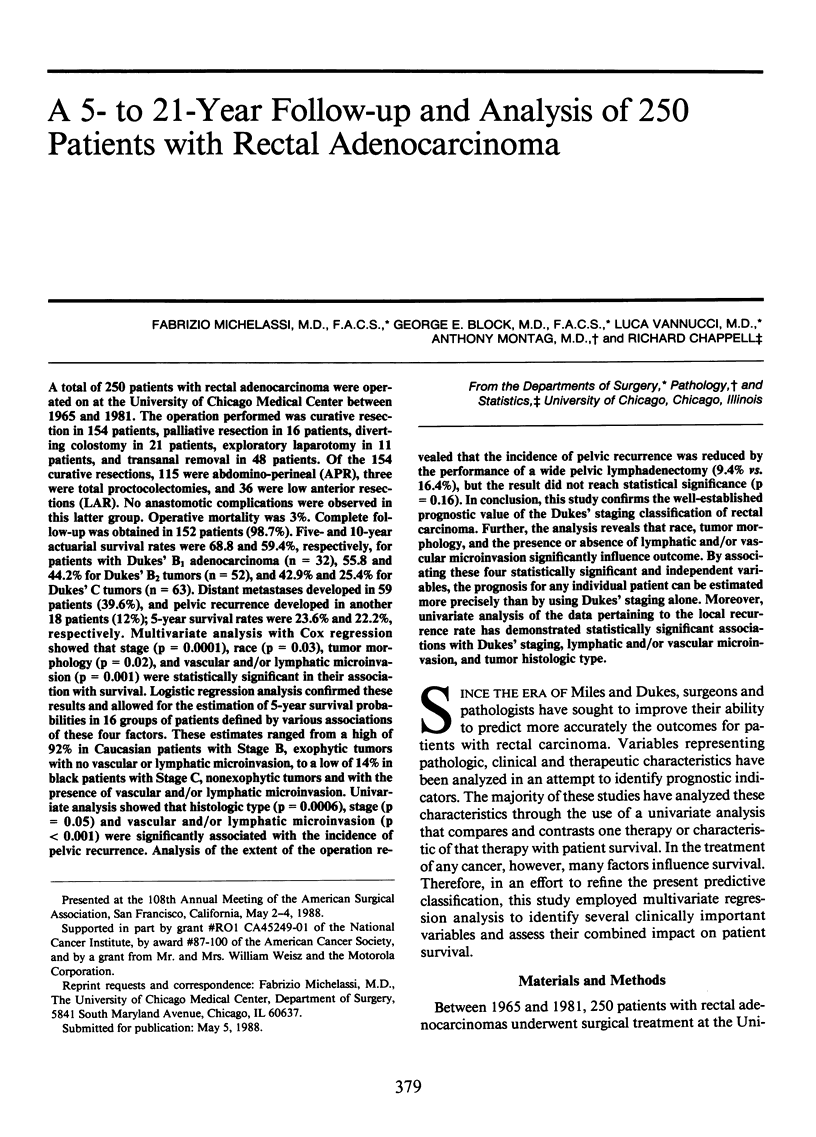
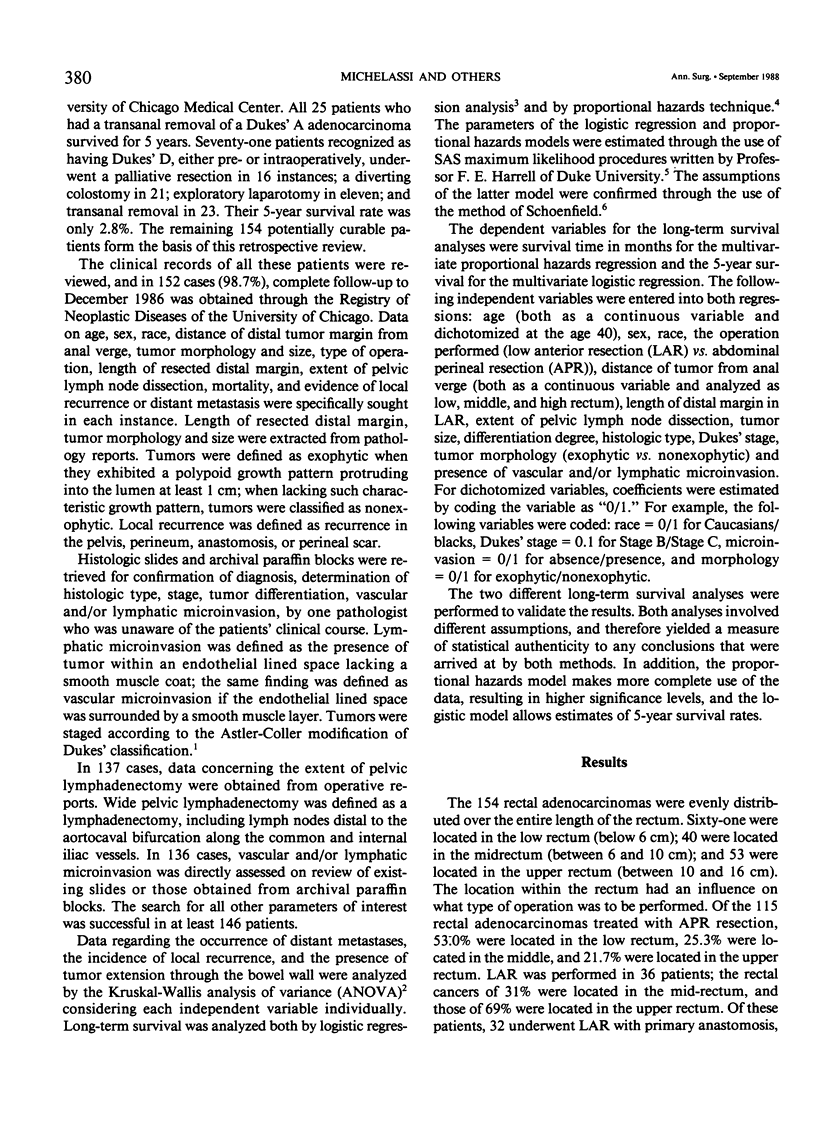
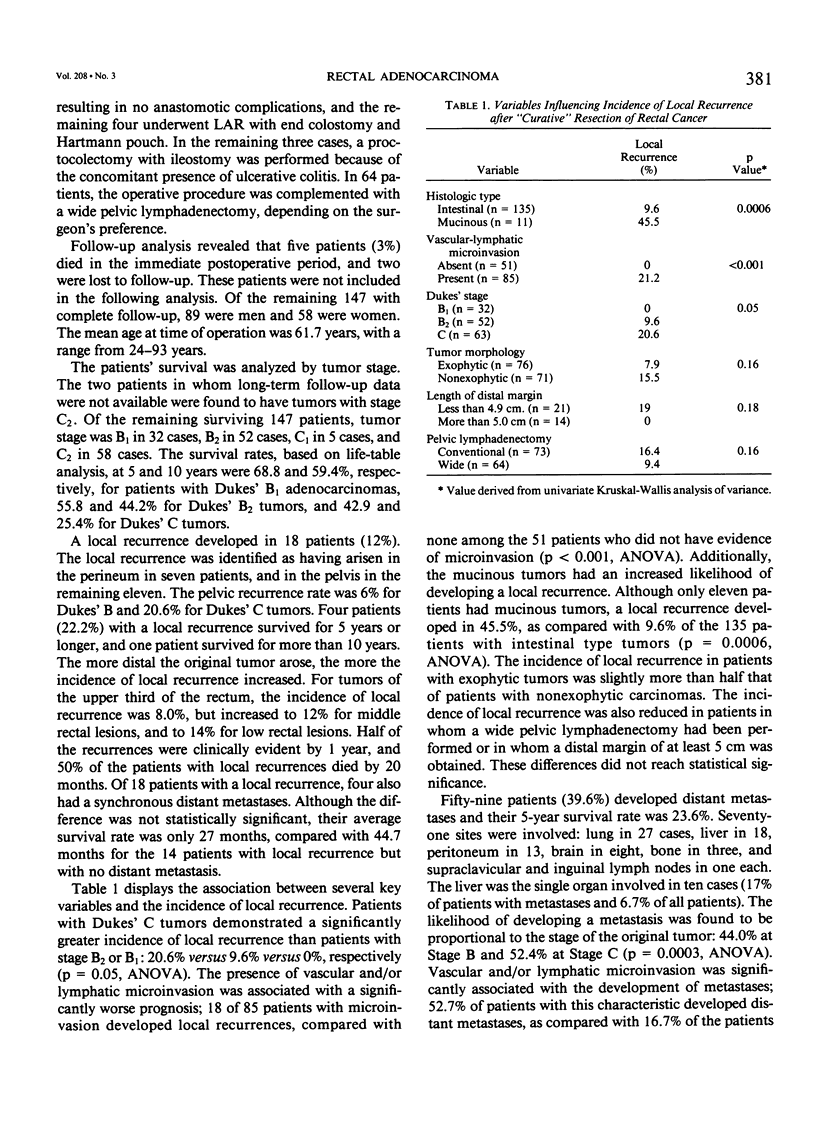
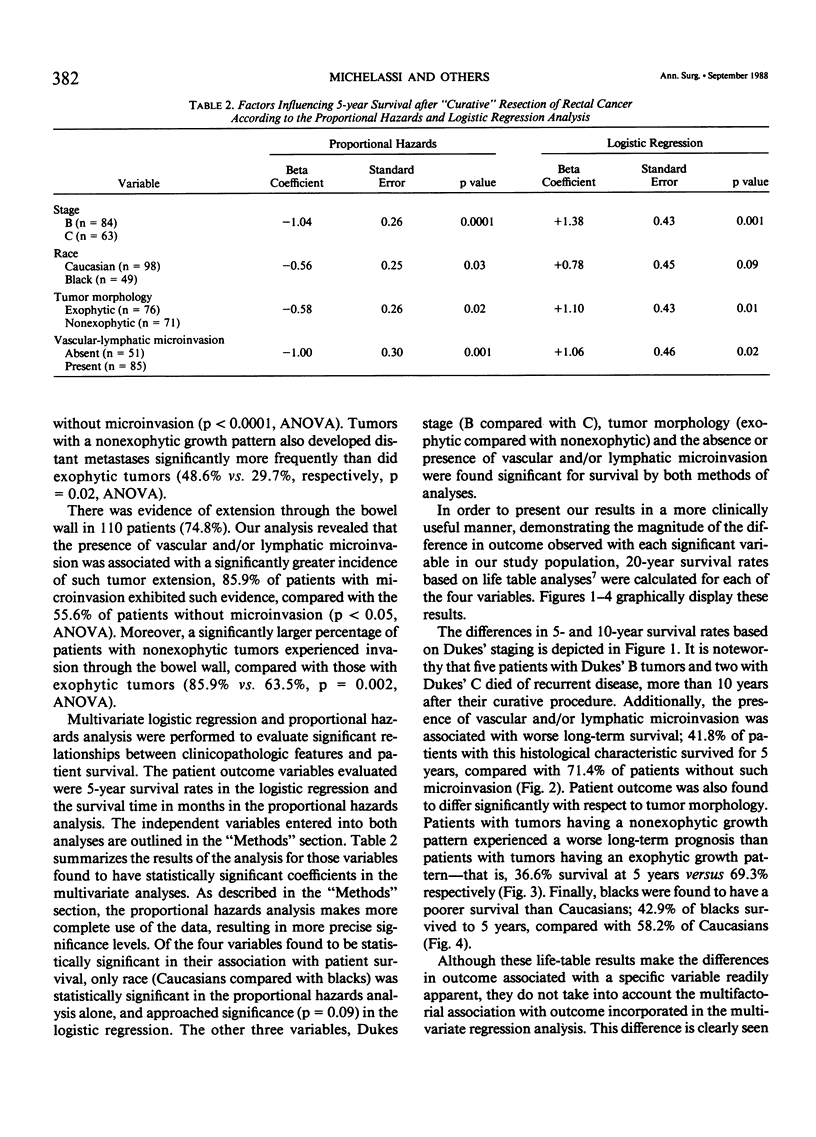
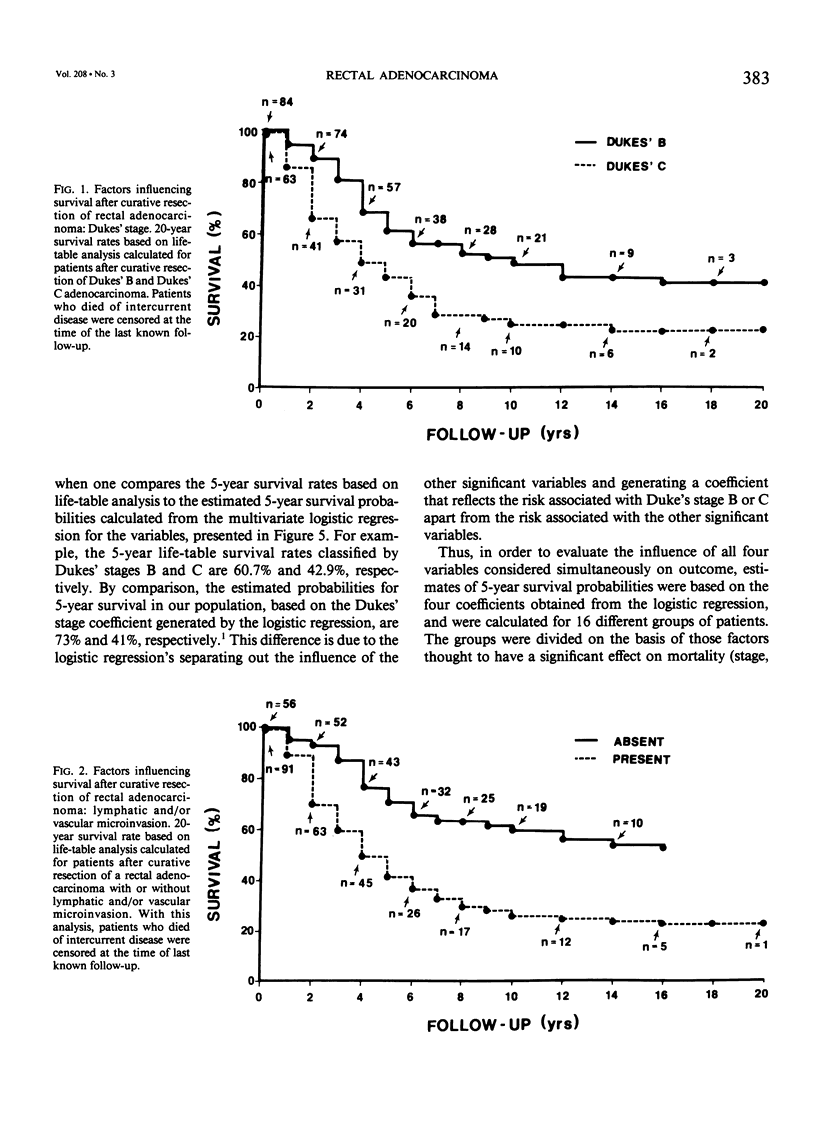
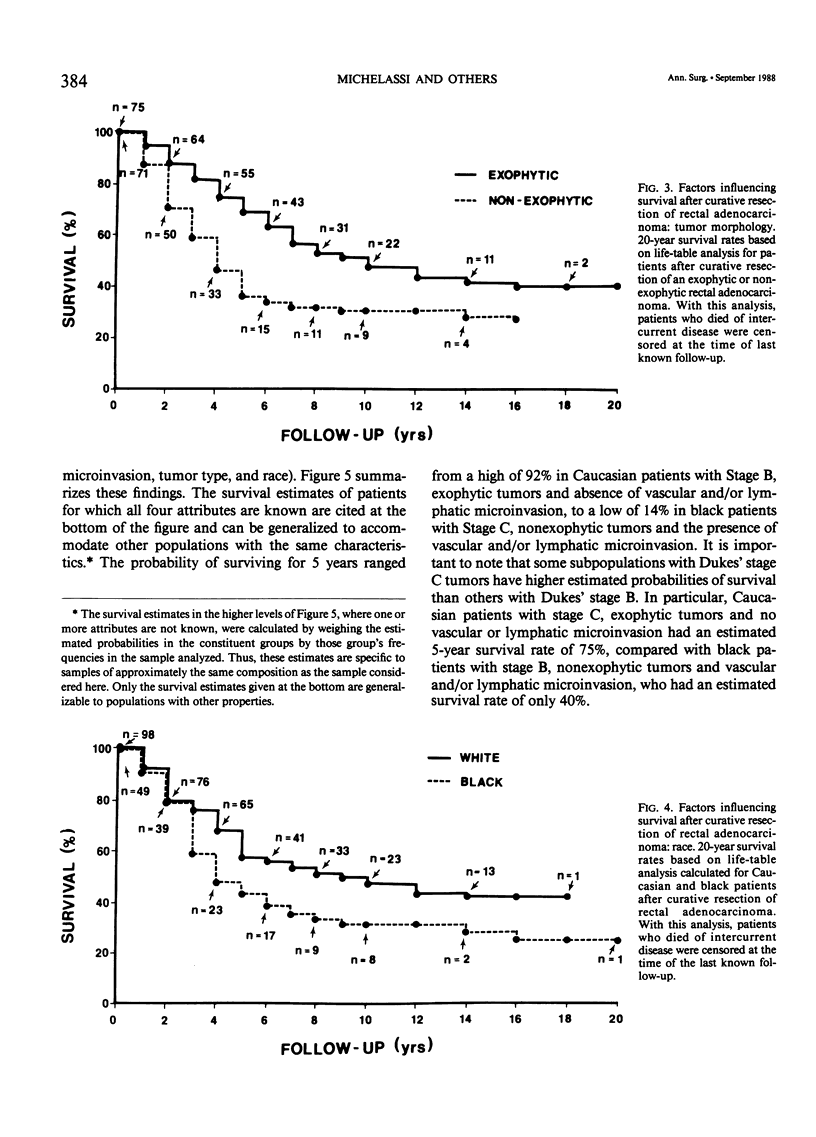
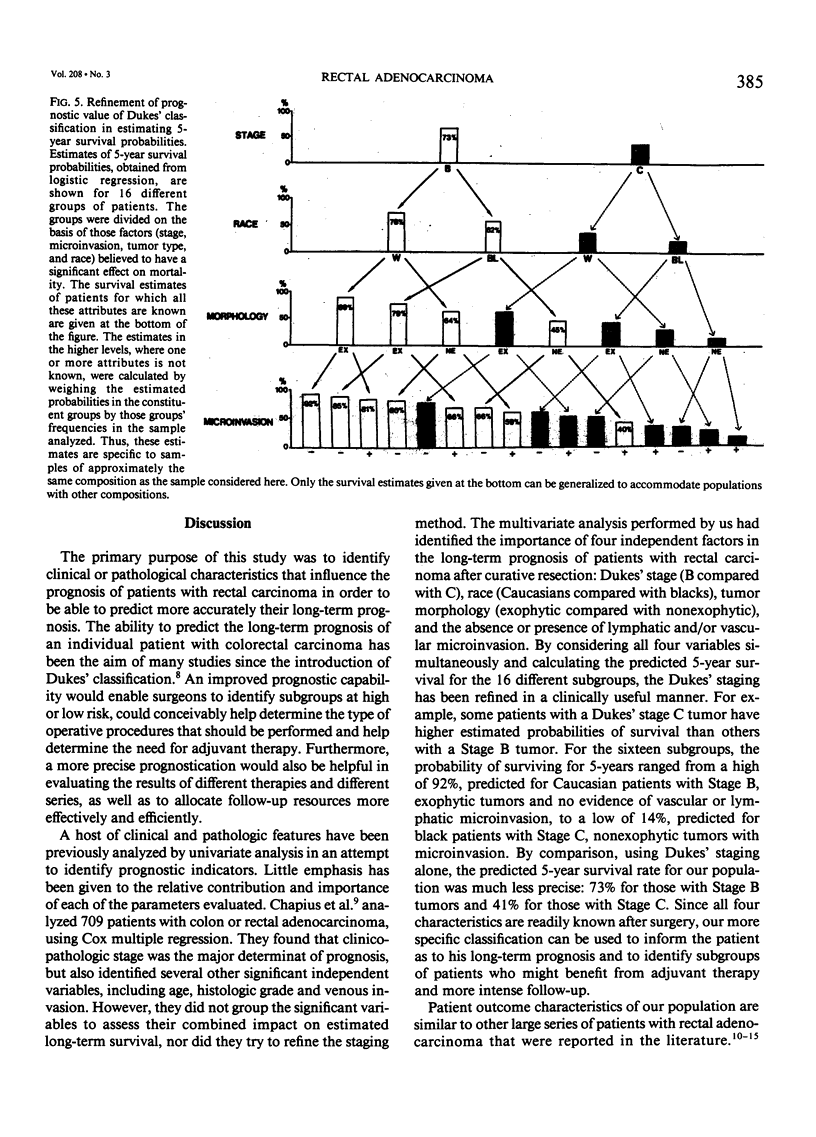
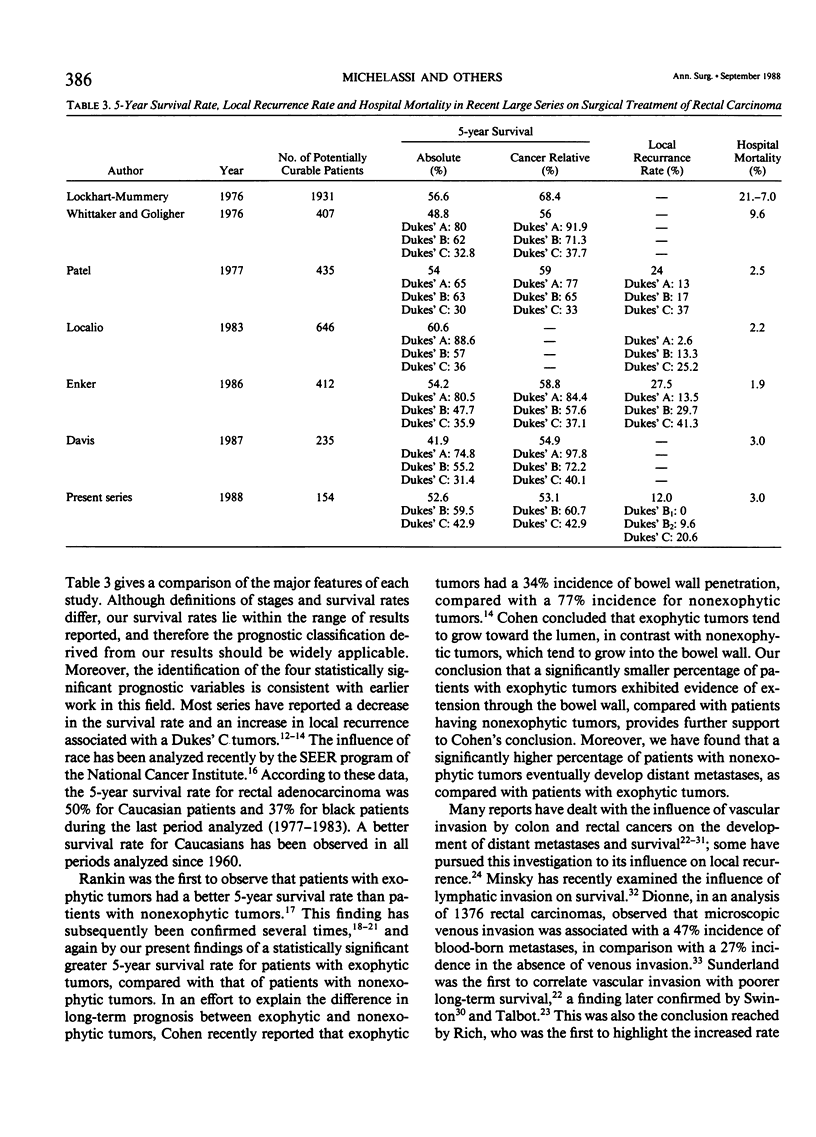
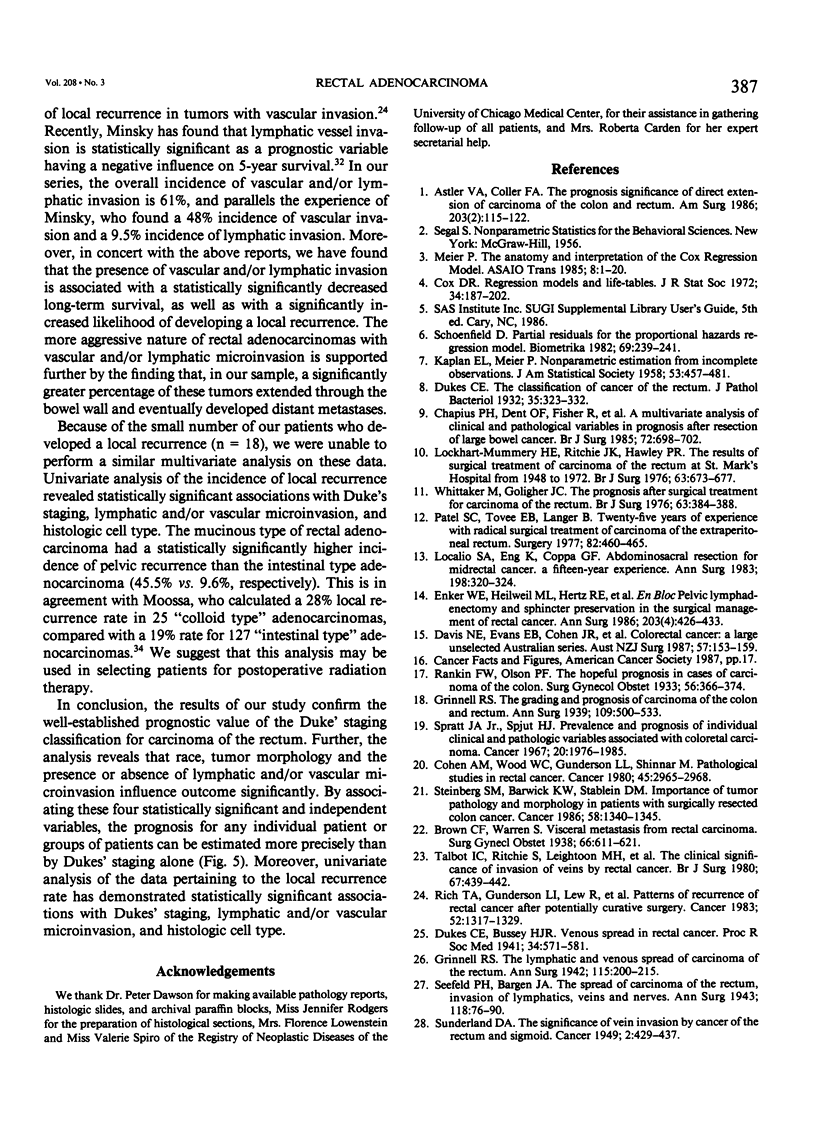
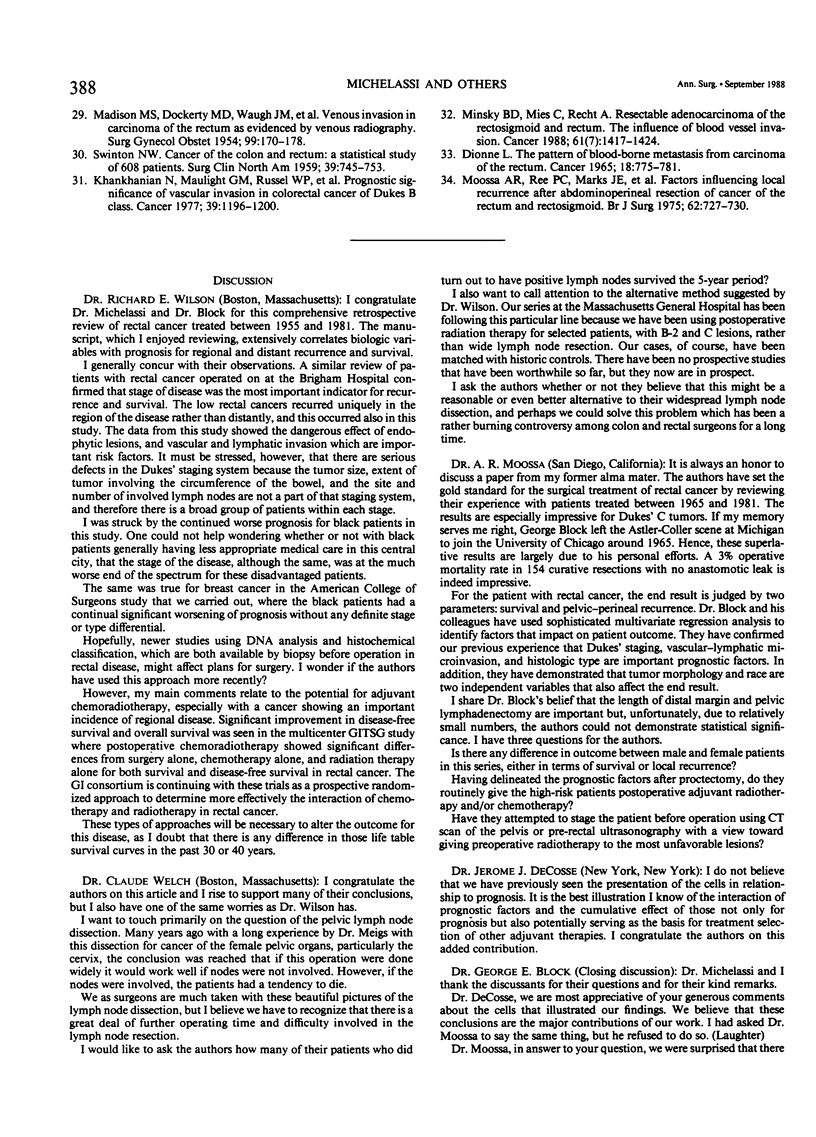
Selected References
These references are in PubMed. This may not be the complete list of references from this article.
- Chapuis P. H., Dent O. F., Fisher R., Newland R. C., Pheils M. T., Smyth E., Colquhoun K. A multivariate analysis of clinical and pathological variables in prognosis after resection of large bowel cancer. Br J Surg. 1985 Sep;72(9):698–702. doi: 10.1002/bjs.1800720909. [DOI] [PubMed] [Google Scholar]
- Cohen A. M., Wood W. C., Gunderson L. L., Shinnar M. Pathological studies in rectal cancer. Cancer. 1980 Jun 15;45(12):2965–2968. doi: 10.1002/1097-0142(19800615)45:12<2965::aid-cncr2820451213>3.0.co;2-m. [DOI] [PubMed] [Google Scholar]
- DIONNE L. THE PATTERN OF BLOOD-BORNE METASTASIS FROM CARCINOMA OF RECTUM. Cancer. 1965 Jun;18:775–781. doi: 10.1002/1097-0142(196506)18:6<775::aid-cncr2820180615>3.0.co;2-v. [DOI] [PubMed] [Google Scholar]
- Davis N. C., Evans E. B., Cohen J. R., Theile D. E., Job D. M. Colorectal cancer: a large unselected Australian series. Aust N Z J Surg. 1987 Mar;57(3):153–159. doi: 10.1111/j.1445-2197.1987.tb01326.x. [DOI] [PubMed] [Google Scholar]
- Dukes C. E., Bussey H. J. Venous Spread in Rectal Cancer: (Section of Proctology). Proc R Soc Med. 1941 Jul;34(9):571–573. doi: 10.1177/003591574103400926. [DOI] [PMC free article] [PubMed] [Google Scholar]
- Enker W. E., Pilipshen S. J., Heilweil M. L., Stearns M. W., Jr, Janov A. J., Hertz R. E., Sternberg S. S. En bloc pelvic lymphadenectomy and sphincter preservation in the surgical management of rectal cancer. Ann Surg. 1986 Apr;203(4):426–433. doi: 10.1097/00000658-198604000-00015. [DOI] [PMC free article] [PubMed] [Google Scholar]
- Grinnell R. S. THE GRADING AND PROGNOSIS OF CARCINOMA OF THE COLON AND RECTUM. Ann Surg. 1939 Apr;109(4):500–533. doi: 10.1097/00000658-193904000-00002. [DOI] [PMC free article] [PubMed] [Google Scholar]
- Grinnell R. S. THE LYMPHATIC AND VENOUS SPREAD OF CARCINOMA OF THE RECTUM. Ann Surg. 1942 Aug;116(2):200–216. doi: 10.1097/00000658-194208000-00005. [DOI] [PMC free article] [PubMed] [Google Scholar]
- Khankhanian N., Mavligit G. M., Russell W. O., Schimek M. Prognostic significance of vascular invasion in colorectal cancer of Dukes' B class. Cancer. 1977 Mar;39(3):1195–1200. doi: 10.1002/1097-0142(197703)39:3<1195::aid-cncr2820390327>3.0.co;2-a. [DOI] [PubMed] [Google Scholar]
- Localio S. A., Eng K., Coppa G. F. Abdominosacral resection for midrectal cancer. A fifteen-year experience. Ann Surg. 1983 Sep;198(3):320–324. doi: 10.1097/00000658-198309000-00008. [DOI] [PMC free article] [PubMed] [Google Scholar]
- Lockhart-Mummery H. E., Ritchie J. K., Hawley P. R. The results of surgical treatment for carcinoma of the rectum of St Mark's Hospital from 1948 to 1972. Br J Surg. 1976 Sep;63(9):673–677. doi: 10.1002/bjs.1800630902. [DOI] [PubMed] [Google Scholar]
- MADISON M. S., DOCKERTY M. B., WAUGH J. M. Venous invasion in carcinoma of the rectum as evidenced by venous radiography. Surg Gynecol Obstet. 1954 Aug;99(2):170–178. [PubMed] [Google Scholar]
- Minsky B. D., Mies C., Recht A., Rich T. A., Chaffey J. T. Resectable adenocarcinoma of the rectosigmoid and rectum. II. The influence of blood vessel invasion. Cancer. 1988 Apr 1;61(7):1417–1424. doi: 10.1002/1097-0142(19880401)61:7<1417::aid-cncr2820610723>3.0.co;2-9. [DOI] [PubMed] [Google Scholar]
- Moossa A. R., Ree P. C., Marks J. E., Levin B., Platz C. E., Skinner D. B. Factors influencing local recurrence after abdominoperineal resection for cancer of the rectum and rectosigmoid. Br J Surg. 1975 Sep;62(9):727–730. doi: 10.1002/bjs.1800620913. [DOI] [PubMed] [Google Scholar]
- Patel S. C., Tovee E. B., Langer B. Twenty-five years of experience with radical surgical treatment of carcinoma of the extraperitoneal rectum. Surgery. 1977 Oct;82(4):460–465. [PubMed] [Google Scholar]
- Rich T., Gunderson L. L., Lew R., Galdibini J. J., Cohen A. M., Donaldson G. Patterns of recurrence of rectal cancer after potentially curative surgery. Cancer. 1983 Oct 1;52(7):1317–1329. doi: 10.1002/1097-0142(19831001)52:7<1317::aid-cncr2820520731>3.0.co;2-6. [DOI] [PubMed] [Google Scholar]
- SWINTON N. W., MOSZKOWSKI E., SNOW J. C. Cancer of the colon and rectum; a statistical study of 608 patients. Surg Clin North Am. 1959 Jun;39(3):745–752. doi: 10.1016/s0039-6109(16)35800-5. [DOI] [PubMed] [Google Scholar]
- Seefeld P. H., Bargen J. A. THE SPREAD OF CARCINOMA OF THE RECTUM: INVASION OF LYMPHATICS, VEINS AND NERVES. Ann Surg. 1943 Jul;118(1):76–90. doi: 10.1097/00000658-194311810-00005. [DOI] [PMC free article] [PubMed] [Google Scholar]
- Spratt J. S., Jr, Spjut H. J. Prevalence and prognosis of individual clinical and pathologic variables associated with colorectal carcinoma. Cancer. 1967 Nov;20(11):1976–1985. doi: 10.1002/1097-0142(196711)20:11<1976::aid-cncr2820201125>3.0.co;2-m. [DOI] [PubMed] [Google Scholar]
- Steinberg S. M., Barwick K. W., Stablein D. M. Importance of tumor pathology and morphology in patients with surgically resected colon cancer. Findings from the Gastrointestinal Tumor Study Group. Cancer. 1986 Sep 15;58(6):1340–1345. doi: 10.1002/1097-0142(19860915)58:6<1340::aid-cncr2820580626>3.0.co;2-g. [DOI] [PubMed] [Google Scholar]
- Talbot I. C., Ritchie S., Leighton M. H., Hughes A. O., Bussey H. J., Morson B. C. The clinical significance of invasion of veins by rectal cancer. Br J Surg. 1980 Jun;67(6):439–442. doi: 10.1002/bjs.1800670619. [DOI] [PubMed] [Google Scholar]
- Whittaker M., Goligher J. C. The prognosis after surgical treatment for carcinoma of the rectum. Br J Surg. 1976 May;63(5):384–388. doi: 10.1002/bjs.1800630513. [DOI] [PubMed] [Google Scholar]


